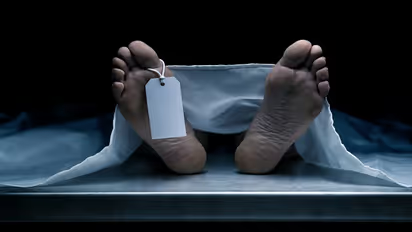Opinion | A legacy for life: How body donation advances medicine after death

Synopsis
Body donation, also known as Deh Dan, is when a person gives their entire body away after death for medical research and education. The process of aiding medical students and researchers in learning about the human body and advancing scientific knowledge plays a crucial role through the act of body donation.
Death is certain, and often unexpected, but you can still decide what happens to your body after you pass away. This is possible if you make the decision in advance to donate your body, or its parts for research purposes. According to the Health Resources & Services Administration, eight important organs can be donated: the heart, two kidneys, pancreas, two lungs, liver, intestines, two hands and the face.
India’s deceased donation rate remains significantly lower compared to that in other countries.
- India: 0.34 deceased donations per million population (2019)
- USA: 26 deceased donations per million population donate their entire body to science per year
The Importance of Body Donation
Body donation, also known as Deh Dan, is when a person gives their entire body away after death for medical research and education. The process of aiding medical students and researchers in learning about the human body and advancing scientific knowledge plays a crucial role through the act of body donation.
Anyone who wants to donate his or her body can make arrangements with a nearby medical college, hospital, or NGO before they pass away. People can request for a consent form from these institutions, which provides details about what will happen after the donor dies. While signing a consent form is not mandatory, it is recommended so that one’s family knows the person’s wishes and understands what they need to do to help fulfil your decision.
Dead human bodies, known as cadavers, are used to educate students about anatomy, which is the study of the body’s structure and function. This subject is crucial for training physicians, surgeons, dentists and other healthcare professionals. Additionally, cadavers are utilized by research doctors to develop new life-saving surgical techniques, including methods for accessing various internal organs.
Medical institutions obtain cadavers through voluntary donations and also receive unclaimed bodies from the police. These contributions are greatly appreciated by both the staff and students at these institutions.
Why Institutions May Refuse Bodies
While most institutions accept body donations, there are specific medical conditions that may cause them to turn down an offer. Depending upon how a person died, a post-mortem examination, also known as an autopsy, may be necessary. This is one of the main reasons a medical school may refuse a body donation. Infectious, or respiratory diseases that could be transmitted from a donor’s body can disqualify someone from being a donor.
Many institutions in foreign countries, also have weight limits for donors, usually capping them at about 80-90 kilograms. Some places additionally consider body mass index (BMI), which is a debated, and often criticized, way of assessing a person’s health.
How Bodies Are Readied for Research
When a body is donated, experts from the anatomy department explain, a team prepares it within 24 hours for preservation. This involves using a process, called ‘embalming’. A special solution containing formaldehyde is injected into a large artery, which replaces the blood in the body. The blood is then drained out through a tube connected to a large vein, ensuring that the body is preserved for further study or use.
The team injects about 10-15 litres of embalming fluid into the body. After this, the donor’s body is stored in a cold storage for six to eight weeks. Once ready, the body is used by the university for research or to help train medical students.
How Donations Advance Knowledge
Some donated bodies may be used to test new surgical methods, while others could help with drug research, or studying how the body decomposes. In some countries, donated bodies are even used as crash test dummies to improve car safety.
Some donated bodies are directly used in medical education. Medical students study these bodies through dissection, giving them valuable practical experience and helping them understand the differences in how each person’s body is built.
Donors Shape Medical Advancements
Donating a body to science is a generous act, no matter the donor’s reason. Experts explain that these donated bodies play a crucial role in education and training. Over a period of at least three years, one body can help teach more than 3,000 healthcare professionals. This includes medical students, pharmacy students, speech and language therapists, dentists and others, making the donation an incredible contribution to medical education and research.
Medical experts explain that the generosity of donors leaves a lasting legacy, because the knowledge gained from their gift can help future generations.
(The author of this article is a Defence, Aerospace & Political Analyst based in Bengaluru. He is also Director of ADD Engineering Components, India, Pvt. Ltd, a subsidiary of ADD Engineering GmbH, Germany. You can reach him at: girishlinganna@gmail.com)
Stay updated with the Breaking News Today and Latest News from across India and around the world. Get real-time updates, in-depth analysis, and comprehensive coverage of India News, World News, Indian Defence News, Kerala News, and Karnataka News. From politics to current affairs, follow every major story as it unfolds. IMD cities weather forecastsRain Cyclone Asianet News Official App